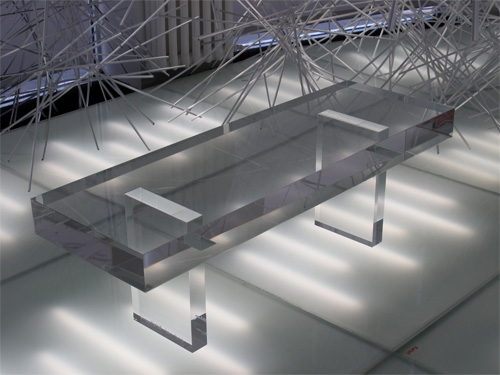Paper Dress By Laura Baruel
Installation
Phantom Limb
By Motohiko Odani
This installation is currently on show at the Mori Art Museum in Tokyo.(www.lamauvaiseherbe.net)
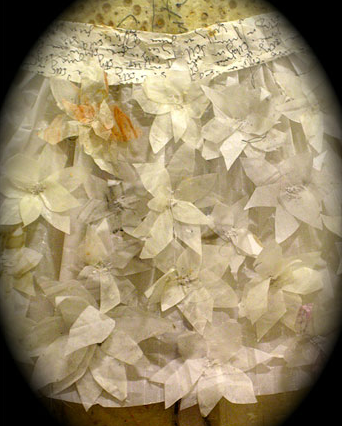
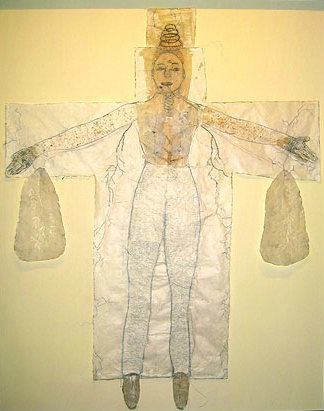
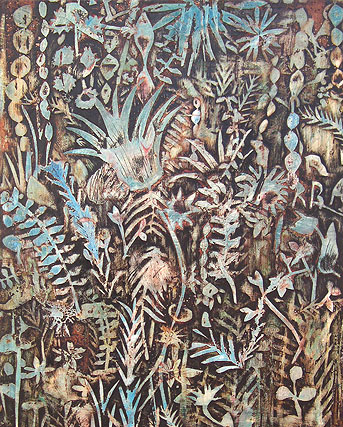
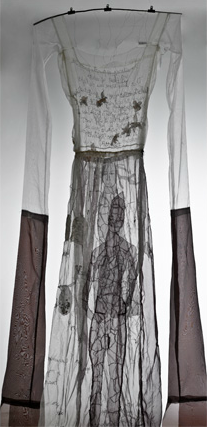
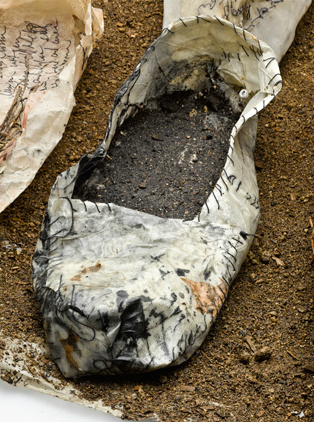
Art – Mixed Media
By Cynthia Fusillo
An Artist and dear friend of our president, Melissa von Hopf, Cynthia is a poet and an extremely talented artist. She has her masters in Fine Art and Psychology and currently resides in Barcelona, Spain. (www.cynthiafusillo.com/)
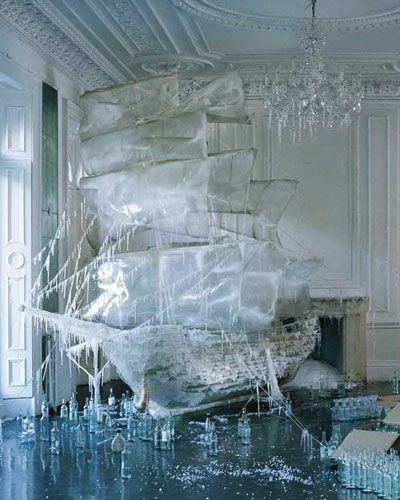
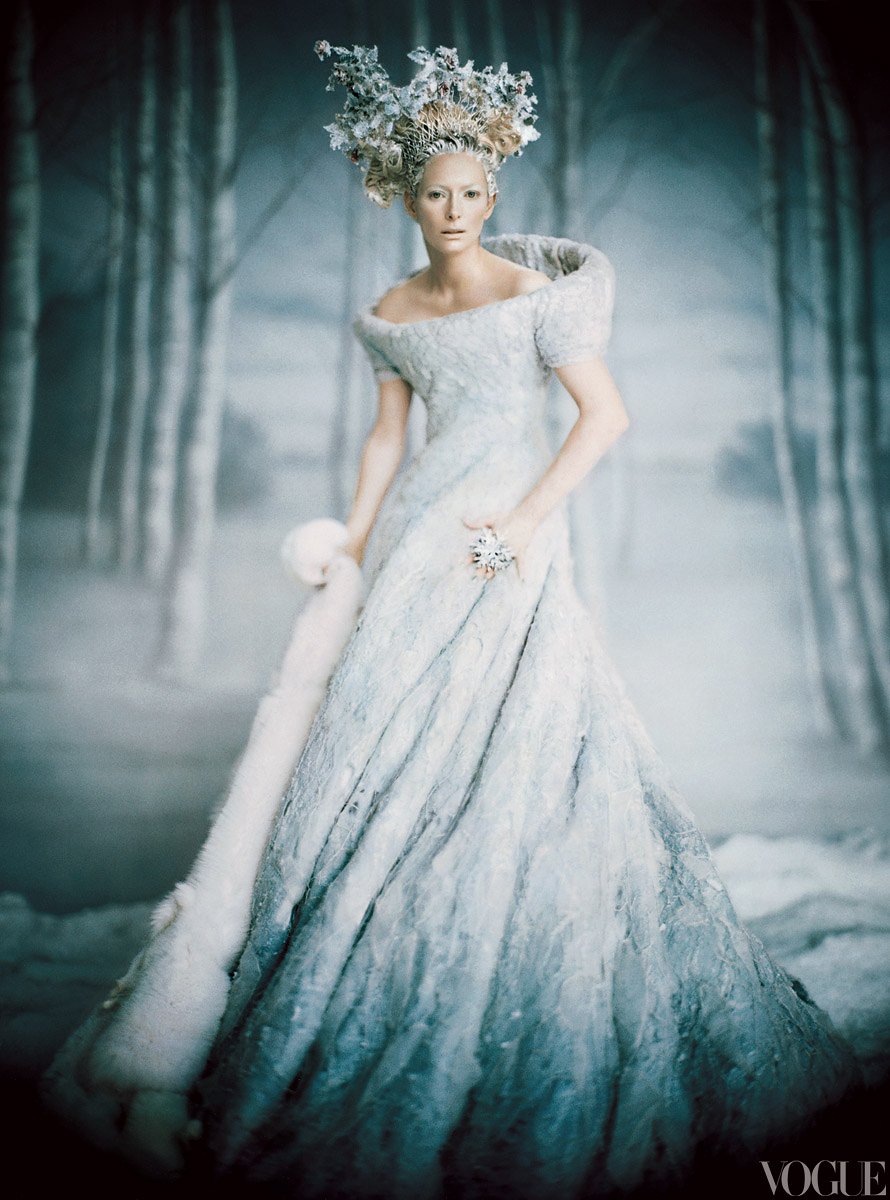
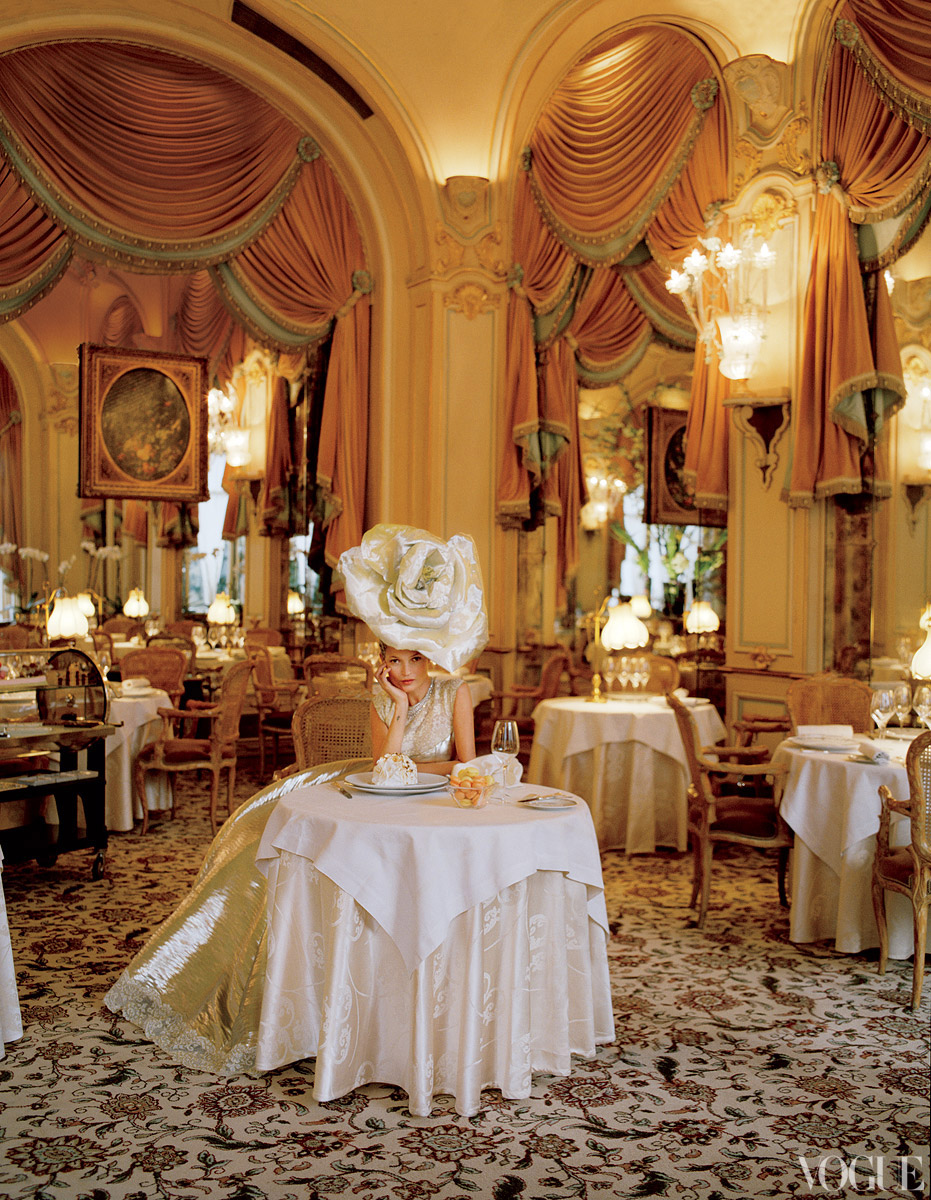
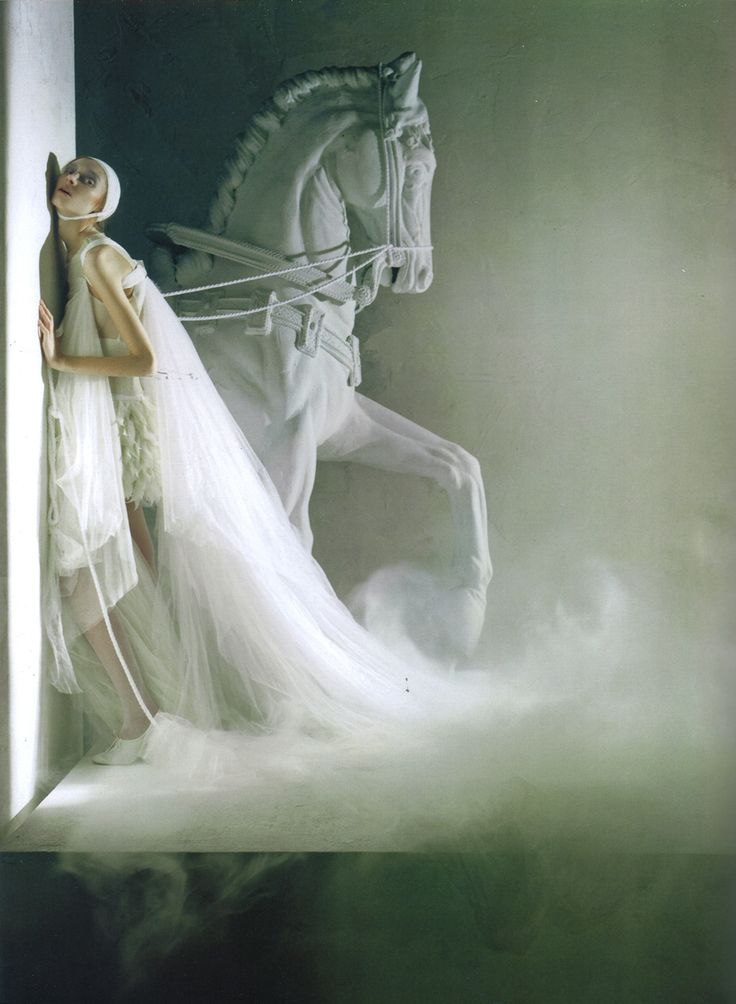
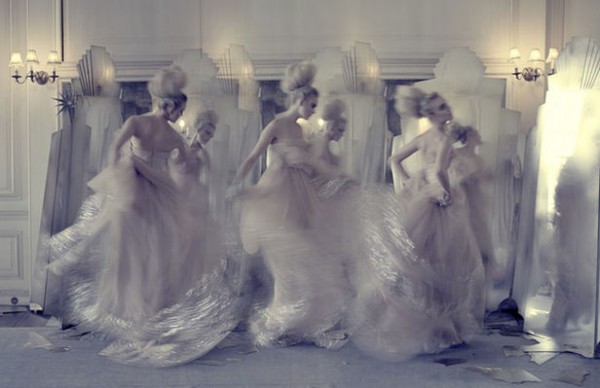
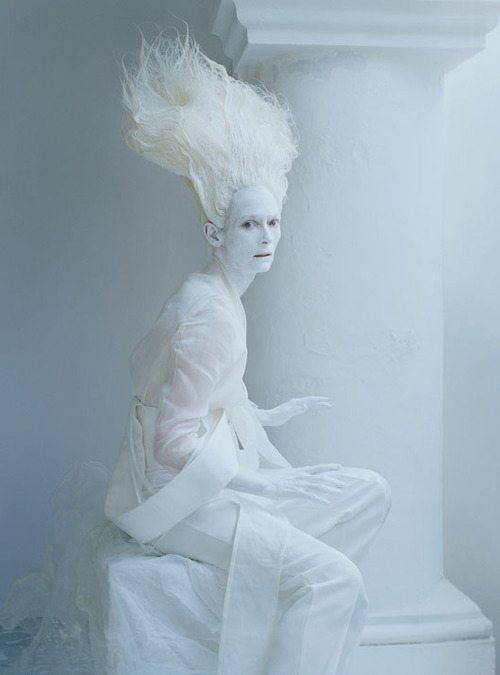
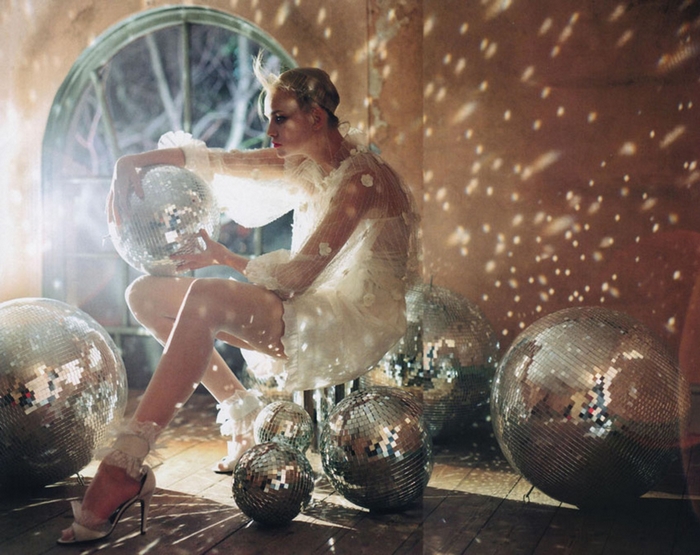
Tim Walker
Responsible for some of fashion’s most magical, whimsical and exquisite imagery, British photographer Tim Walker is one of the most creative photographers working today. Walker’s highly produced sets are fantastical environments, often highly allegorical. Walker often plays with proportion, casting his models as giants in a shrunken world, or the reverse.
Walker’s first step towards his career in photography was a work experience placement at Condé Nast for the duration of his ‘gap year,’ during which the aspiring photographer worked on the publishing company’s Cecil Beaton archive. Contemporaneous to this, Walker entered The Independent’s photography awards, which led to a three-year photography BA (Hons) degree at Exeter College of Art.
Following his graduation Walker moved to New York to take up the enviable position of Richard Avedon’s first assistant. When he returned to London Walker focused on portraiture and reportage for the newspaper industry, however in 2005, aged 25, Walker shot his first fashion story for British Vogue. He has now contributed to a slew of high-profile magazines including Vogue, W and Harper's Bazaar and has shot two front covers for British Vogue - Lily Cole on the July 2005 cover and Stella Tenant on the November 2005 issue. Commercially he has shot advertising campaigns for clients as wide ranging as Barneys New York, Comme des Garçons, Gap and Yohji Yamamoto.
In 2008, his first major exhibition was held at the Design Museum in London, coinciding with the publication of his first book, entitled ‘Pictures.’ In the same year Walker received the Isabella Blow award for Fashion Creator at the British Fashion Awards. In May 2009, he received an infinity award from The International Centre of Photography in New York for his work as a fashion photographer. Both the Victoria & Albert Museum and the National Portrait Gallery in London have Tim Walker photographs in their permanent collections.
In 2010 Walker’s first short film, ‘The Lost Explorer’ was premiered at Locarno Film Festival in Switzerland and went on to win best short film at the Chicago United Film Festival, 2011. 2012 saw the opening of Walker’s hugely popular ‘Story Teller’ photographic exhibition at Somerset House.
Walker’s believes that a camera “is simply a box put between you and what you want to capture.” What he wants to capture is invariably what many revel in seeing.
(http://www.businessoffashion.com/community/people/tim-walker)
The Invisibles
By Tokujin Yoshioka
Want to know whether is it possible to create an invisible chair? It has already being produced by Japanese designer Tokujin Yoshioka. This amazing piece fits nicely in any space...a perfect camouflage furniture!
Italian furniture producer Kartell will release “The invisibles” designed by Japanese designer Tokujin Yoshioka. Above are images of the shop installation titled “Snowflakes”, which promotes “The Invisibles”.
Ostuni, Italy
One of Puglia’s best looking towns, Ostuni stands out for its stunning 15th- century Gothic cathedral and bright, white washed historic center. It is situated in the province of Brindisi, about 8 km inland from the enticing Adratic shores, and is a breathtaking illustration of Mediterranean architecture with medieval touches.
A lively and intriguing maze of cobbled narrow alleys, arches, staircases, and atmospheric piazzas – all dipped in dazzling white paint – make La Città Bianca one of Southern Italy’s most striking little towns.
Pueblos Blancos
In southern Spain, in the autonomous community of Andalusia, between the Atlantic in the west and the Mediterranean in the east, lies some of the prettiest towns in Spain - perfectly whitewashed with red and brown tiled roofs, narrow, winding, cobblestone streets, and ornate churches atop cliffs and river gorges, and all offering rolling views of the hills below. These are the famous ‘White Towns of Andalusia’, or Pueblos Blancos. The towns are located the northern part of the provinces of Cádiz and Málaga in southern Spain, mostly within the Sierra de Grazalema Natural Park.
The Towns were originally built and settled by Berber farmers from North Africa who came to Andalusia between the 9th and 10th centuries - the early heyday of Moorish rule. While the Moors were in charge, these farmers peacefully worked the valleys. By the late 11th century, when the Christian Reconquest began to topple the Muslim kingdoms in Northern Spain, these farmers began heading for the hills. Choosing the highest vantage points, some of which had already been the sites of former Roman settlements, and enclosing their streets of Moorish-style whitewashed homes in fortified walls, they found safety in their isolated pueblos. Although the Catholic troops eventually triumphed, it is often the Moorish influence that makes these towns architecturally interesting, with their labyrinths of narrow, cobblestone streets, their fortress-like walls, and their little whitewashed houses with the characteristic wrought-iron grilles. Despite having a distinct, Arabic feel to them, each village has at least one Roman Catholic church – a sign of Catholic victory over the Muslims.
Whitewashing buildings were done because of the antibacterial properties of the alkaline whitewash, and also because a wholly whitewashed village appears socially cohesive. However, it is nevertheless a fact that there is no evidence that the majority of the villages were whitewashed before the 1920s. Indeed, investigation of paint layers on the buildings have revealed that few were whitewashed before that time, and further, that an array of pigments were added to the annual whitewashing activity, chiefly red and yellow ochres. Some decorative effects were also recorded, from the eighteenth century onwards, in a number of villages. These colored buildings survived until the dictator Miguel Primo de Rivera passed an instruction to the leader's local political allies to suppress differences in villagers' choices and to disallow any deviation from a politically engineered appearance of normality.
(http://www.amusingplanet.com/2013/04/the-white-towns-of-andalusia.html)
Introducing The Whimsical & White Collection
Presented by Judith von Hopf




